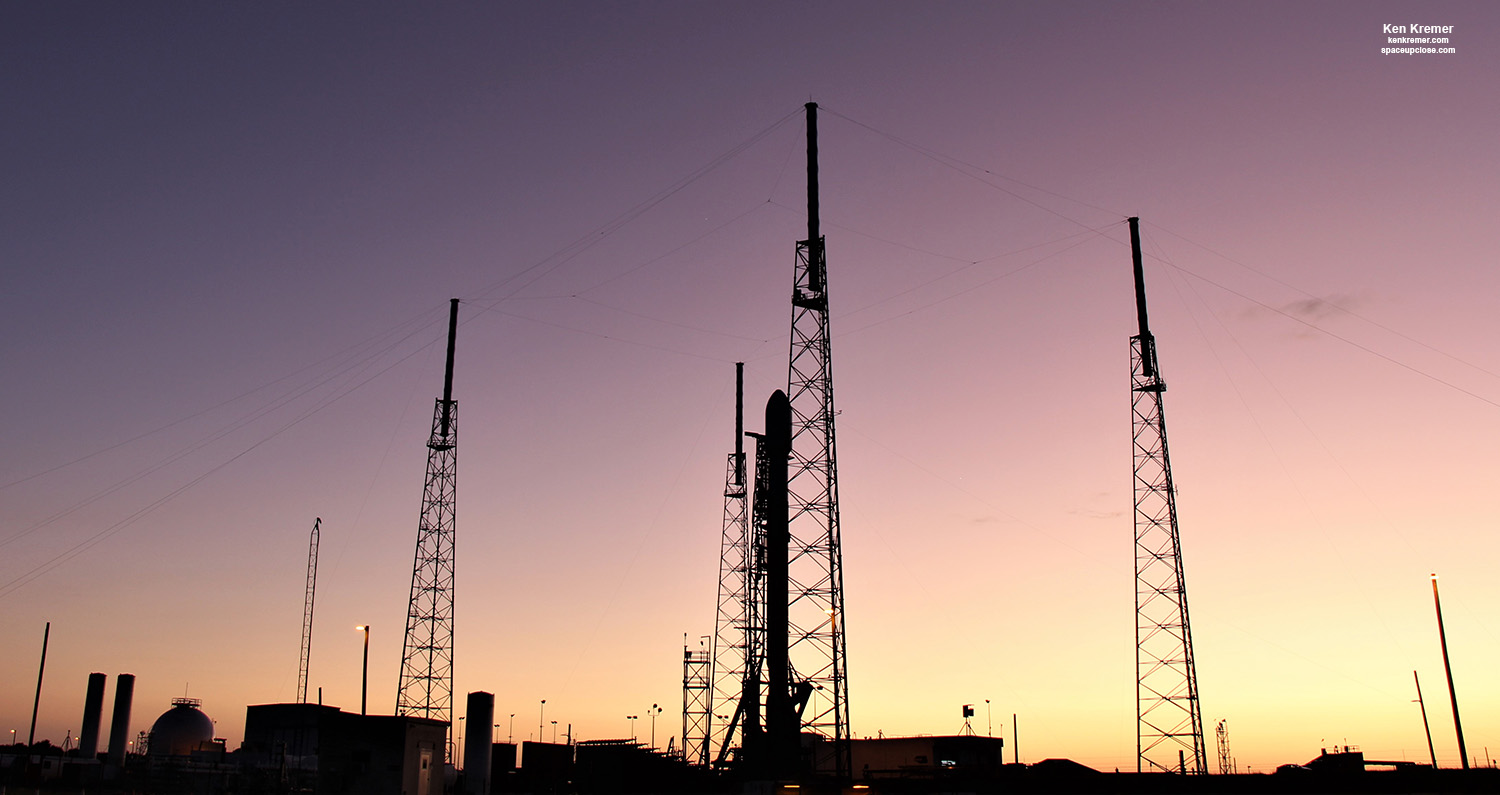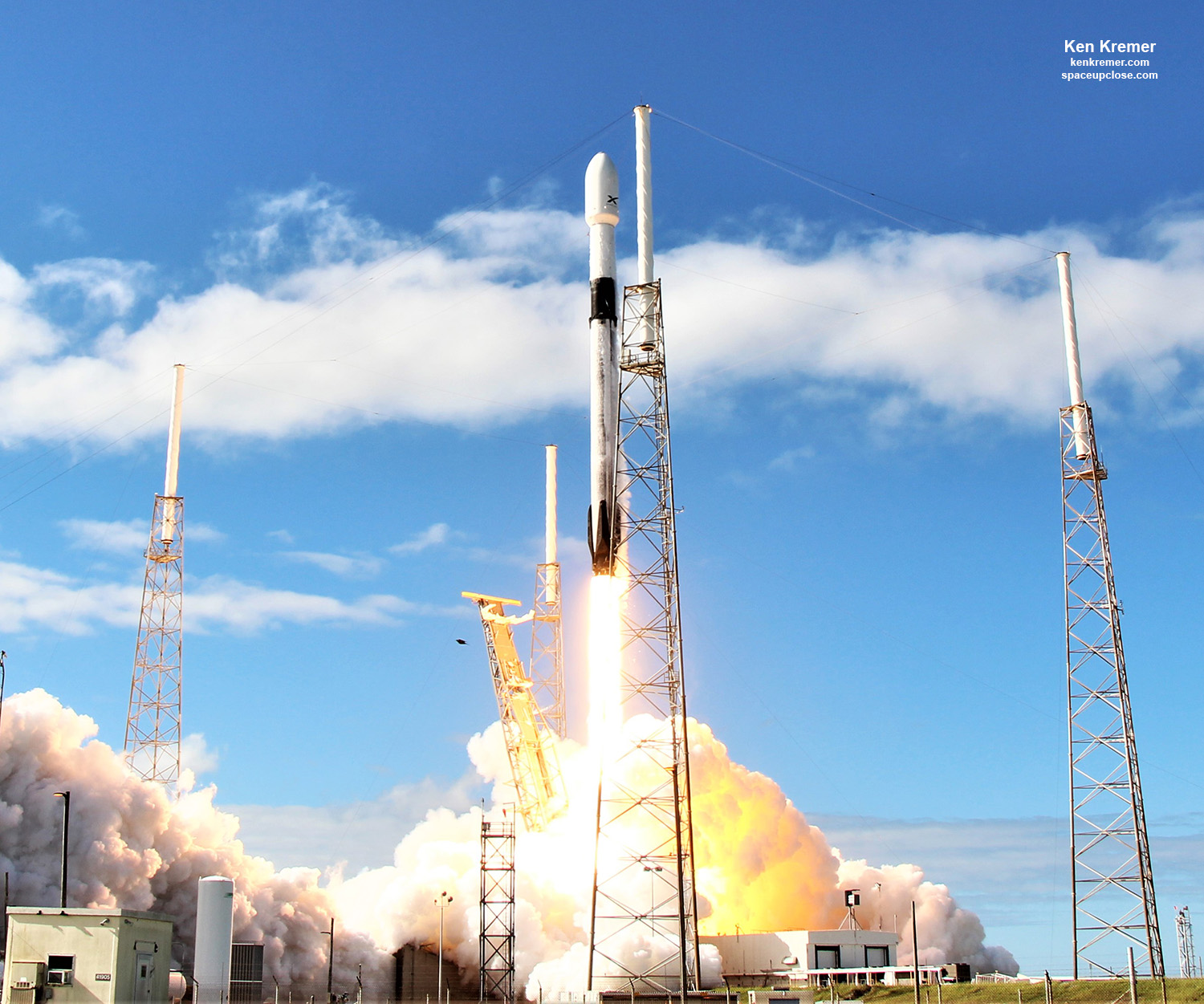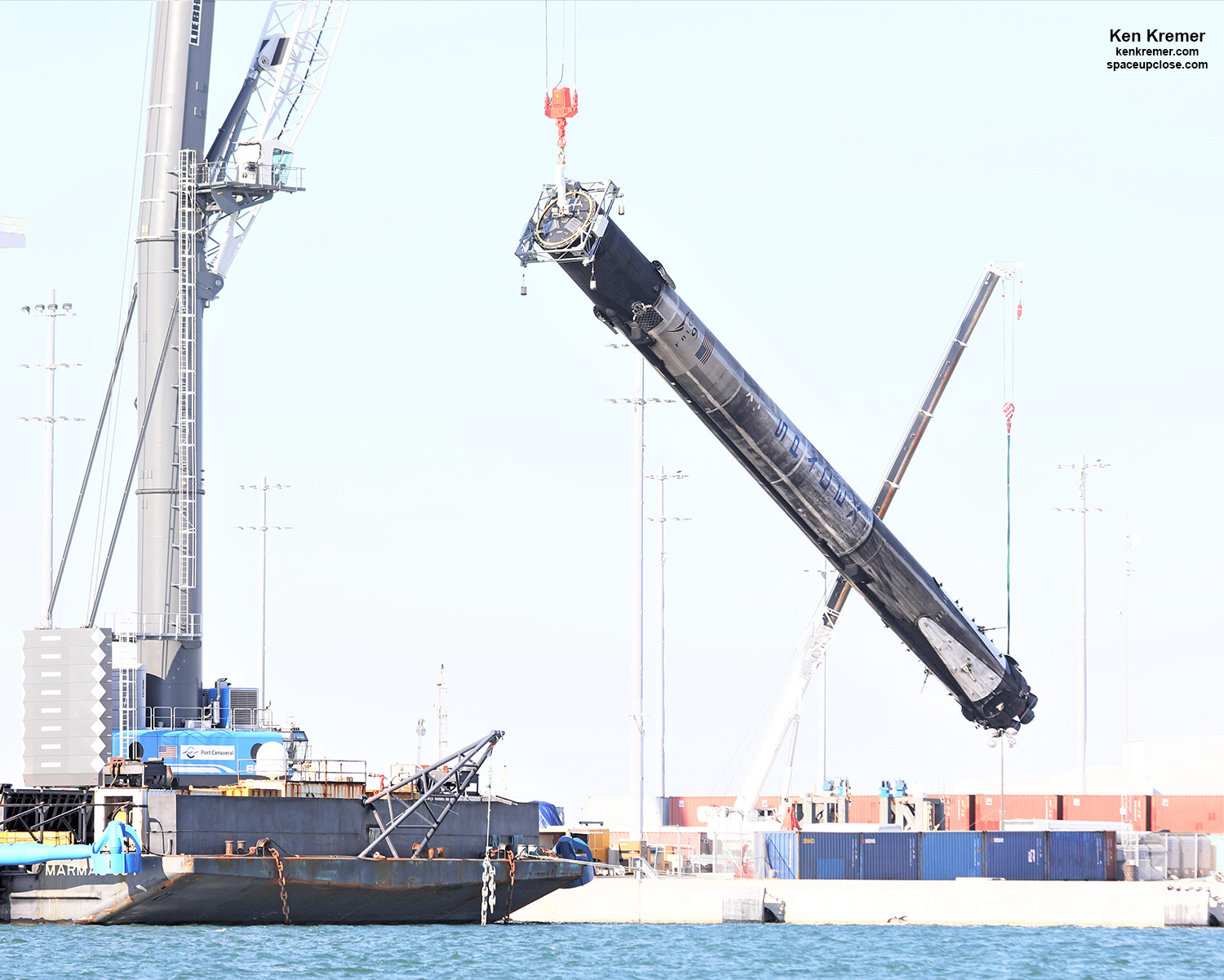
For SpaceUpClose.com & RocketSTEM
PORT CANAVERAL/CAPE CANAVERAL AIR FORCE STATION, FL – The first ever quadruply launched & landed SpaceX Falcon 9 first stage booster from the Starlink liftoff was leglessly lowered horizontal on Tuesday, Nov. 19 and transported back to Cape Canaveral after all four landing legs were completely detached when technicians attempts to retract them were unsuccessful in Port Canaveral, Florida.
Crane crews methodically tried mightily to retract three of the 4 time recovered boosters landing legs on Monday, Nov. 18 three days after the Starlink booster sailed into port and was craned off the “Of Course I Still Love You” (OCISLY) droneship Friday afternoon, Nov. 15 in a craning operation that utilized the new German-built Liebherr Mobile Harbor Crane for the first time by crane crews at Port Canaveral.
I watched the Falcon 9 booster arrival in Port Canaveral at Jetty Park, craning off OCISLY, leg retraction attempts and rotation to horizontal at the northside berthing wharf.
Enjoy our Space UpClose photo gallery of the exciting action with Falcon 9 booster 1048.4.
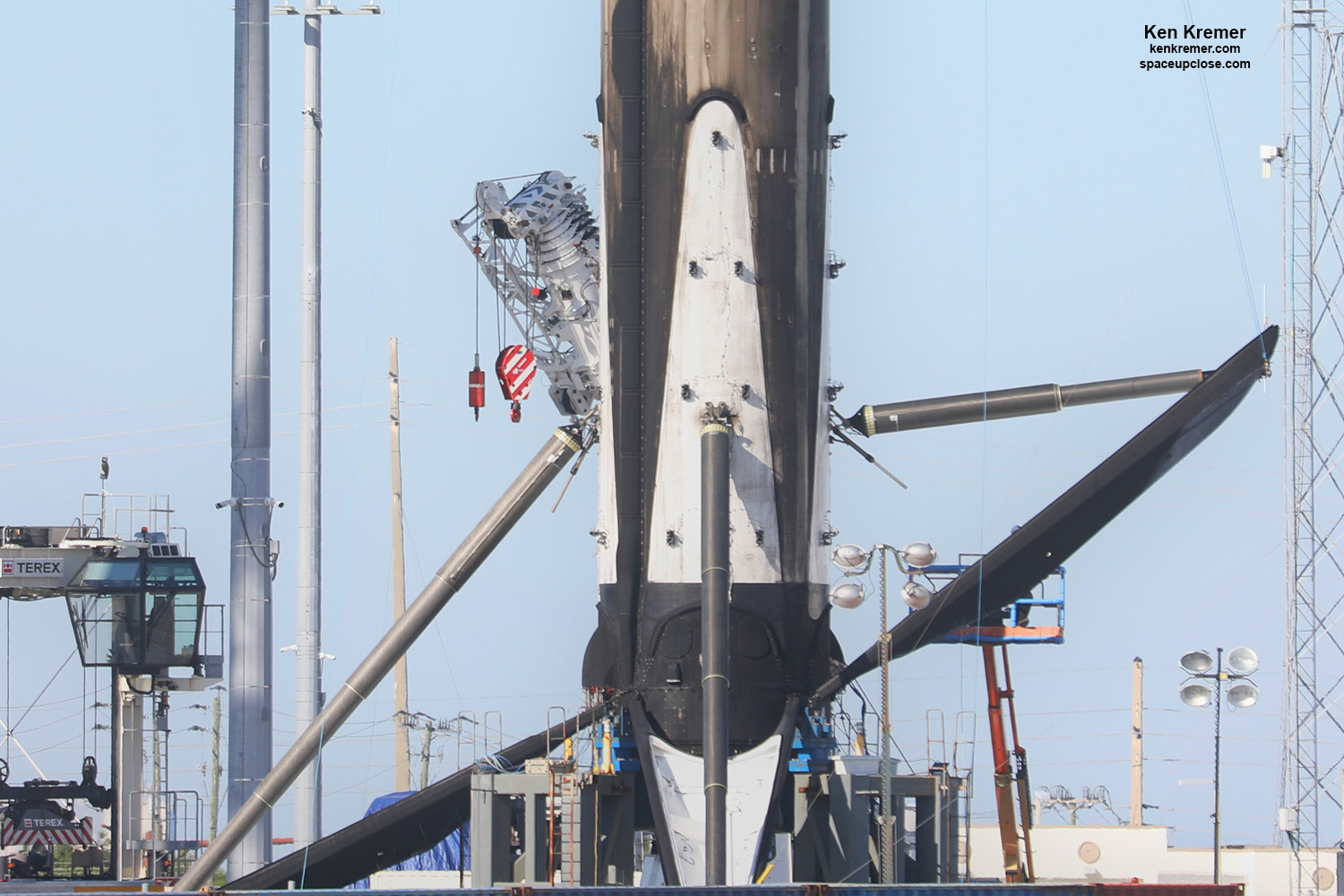
Weekend leg work was fully halted by dismal, dreary, rainy and windswept conditions.
Work resumed Monday morning, Nov. 18 at the ground pedestal holding the 15-story-tall Starlink first stage booster.
The SpaceX crane workers first tried to retract the right side landing leg around noon.
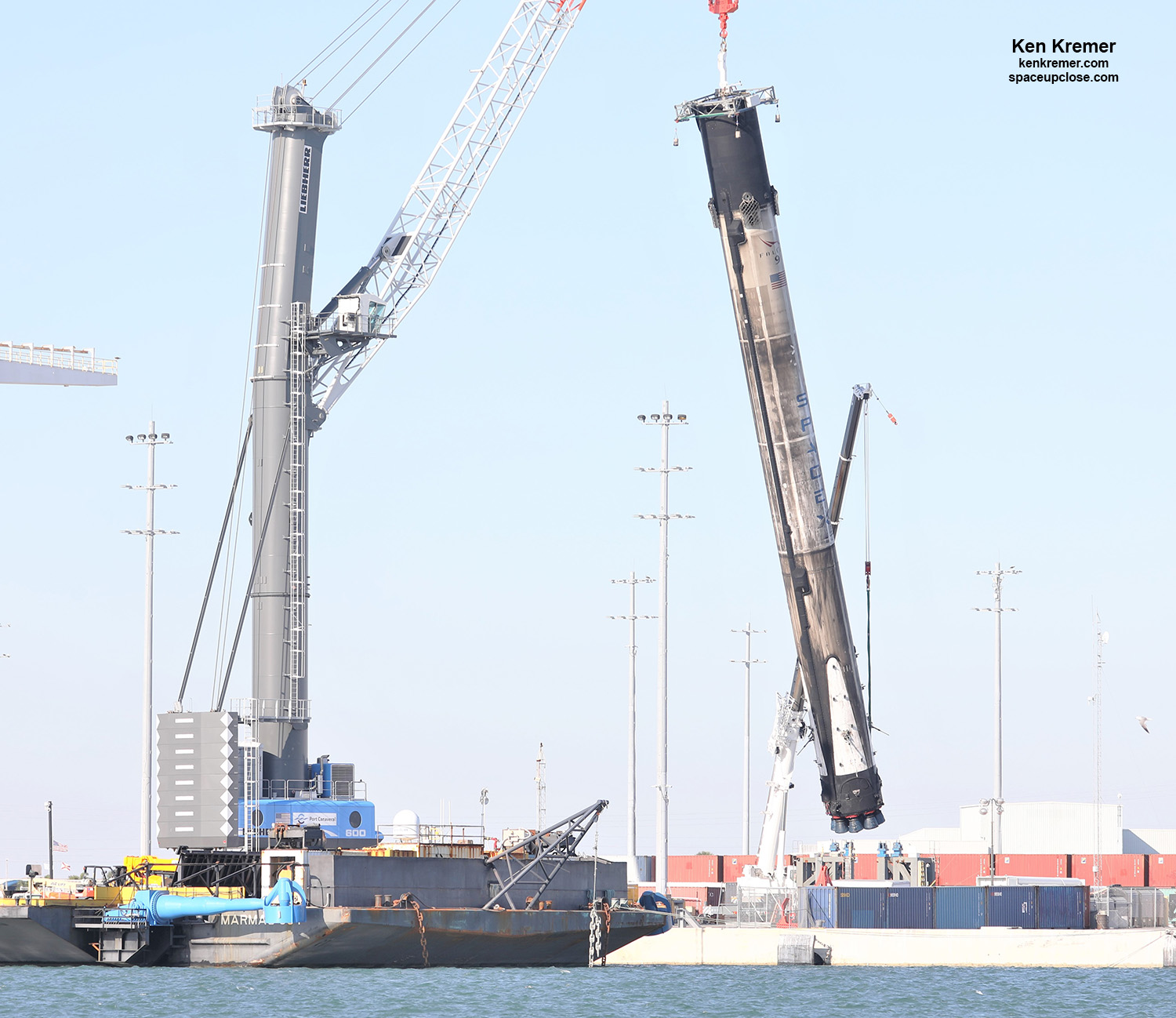
In fits and starts the team gradually raised the right leg about half way a few yards at a time – halting several times as one technician was raised into position in a cherry picker right beside the leg strut by a jig crane in order to get a birdseye view.
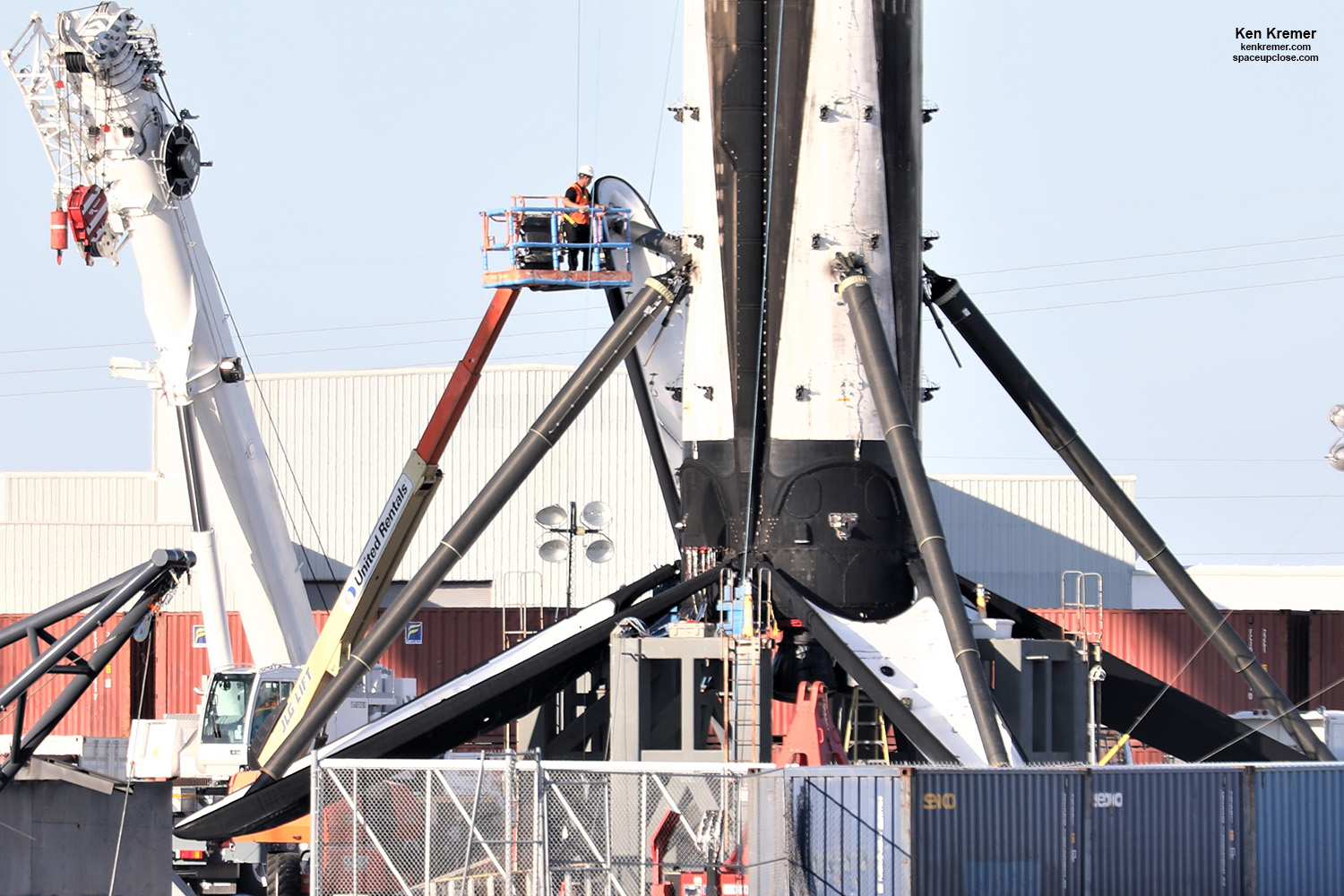
This enabled the tech to actively intervene, bending over and apparently touching the legs, perhaps even lubricating them.
It was hard to tell from my observing distance of a few hundred feet away across the port channel.
After apparently determining it was futile to proceed further, the right leg was then lowered fully back down into the deployed position.
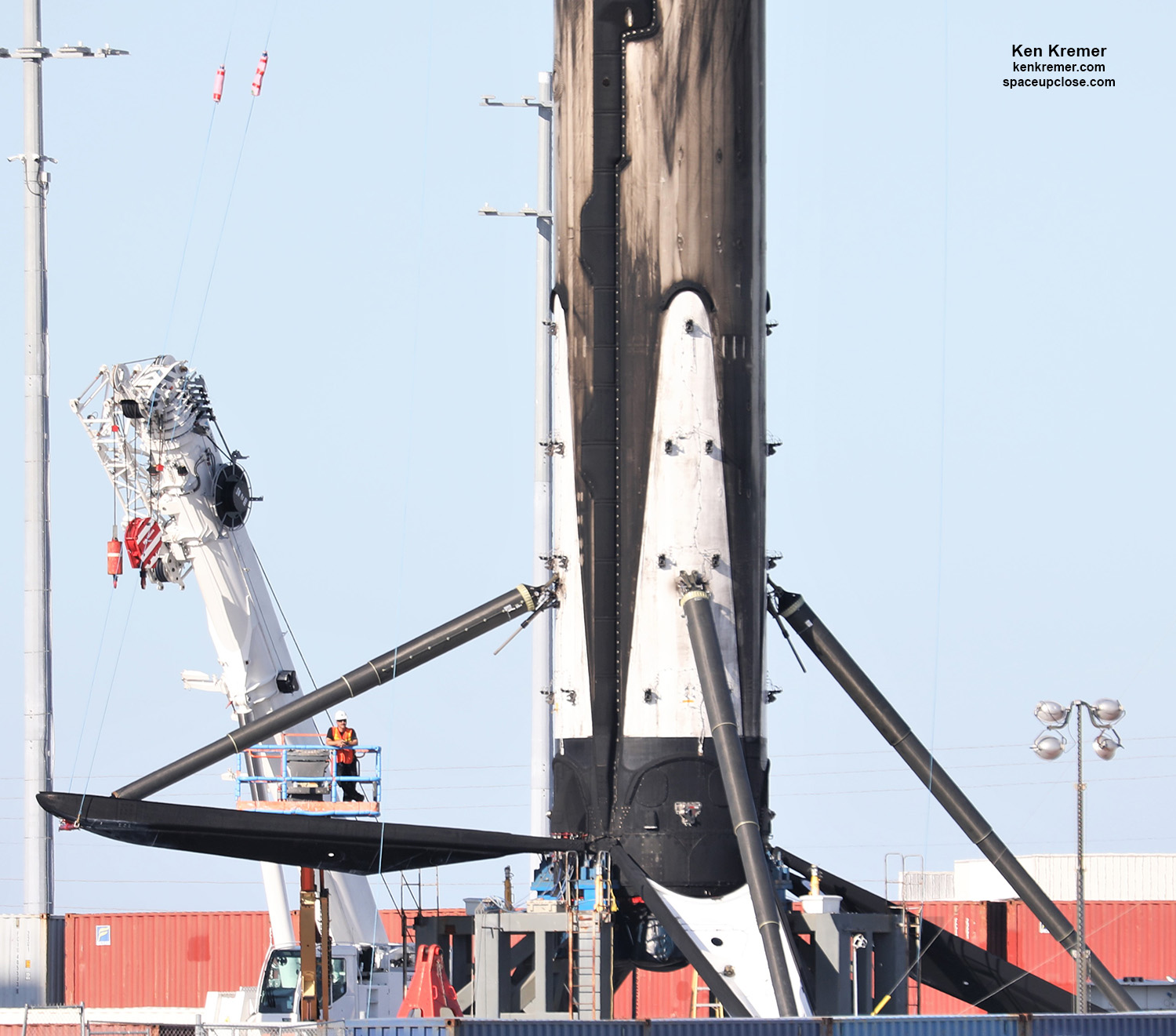
The team moved on and repeated this process for the left leg and then the rear leg – continuing work into the early evening.
With each leg they were only able to retract the legs roughly hallway before apparently declaring the effort futile- or learning as much as they could.
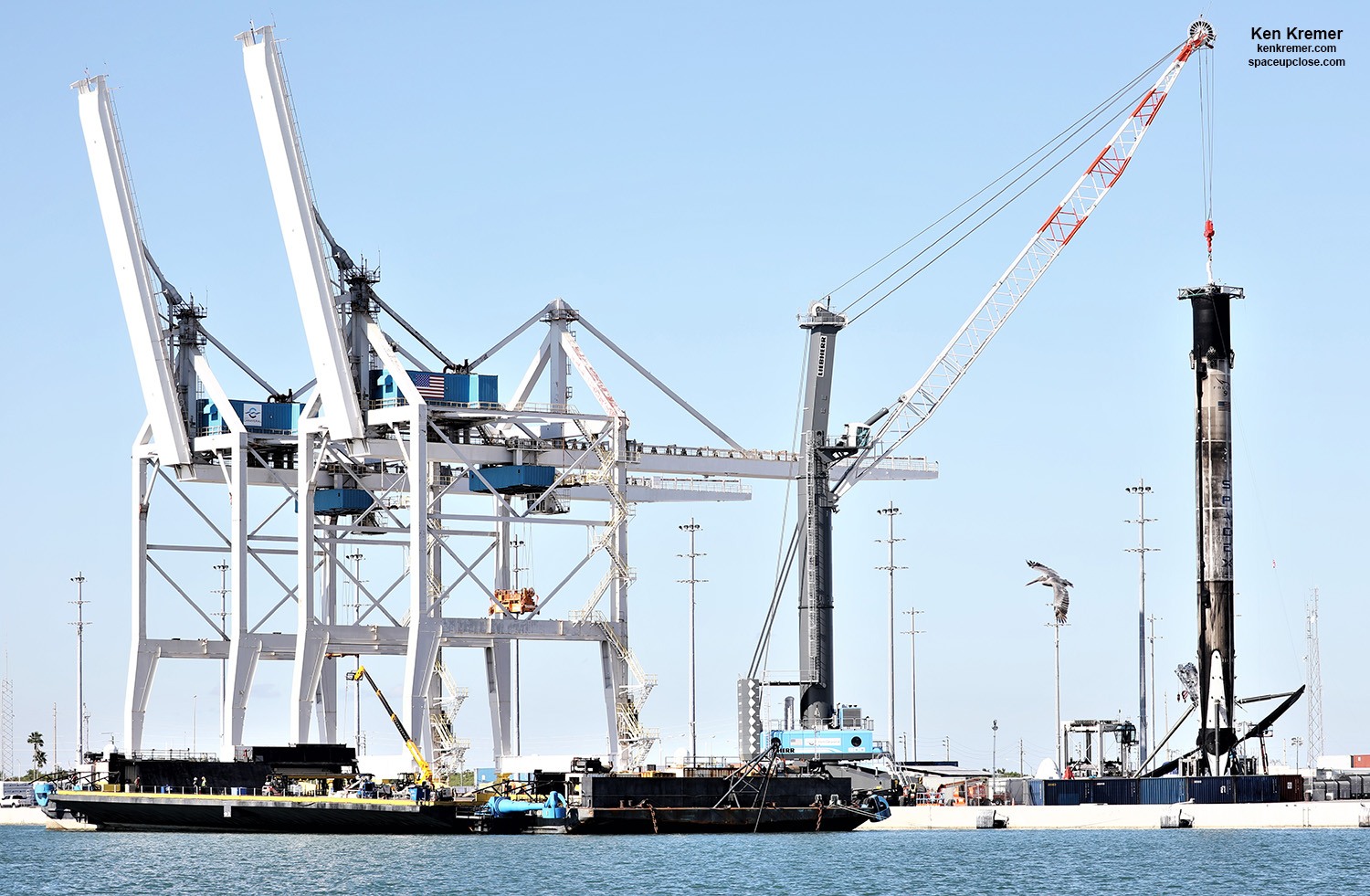
Later Monday, they finally fully raised only the front leg. But they was soon lowered back down too.
Its not known if SpaceX actually intended to try and fully retract the legs- or rather determine just how far up they could raise them.
The legs are impacted by significant aerodynamic forces and stress on launch, deployment and landing – and may possibly be partially deformed along the way.
But that is not known.
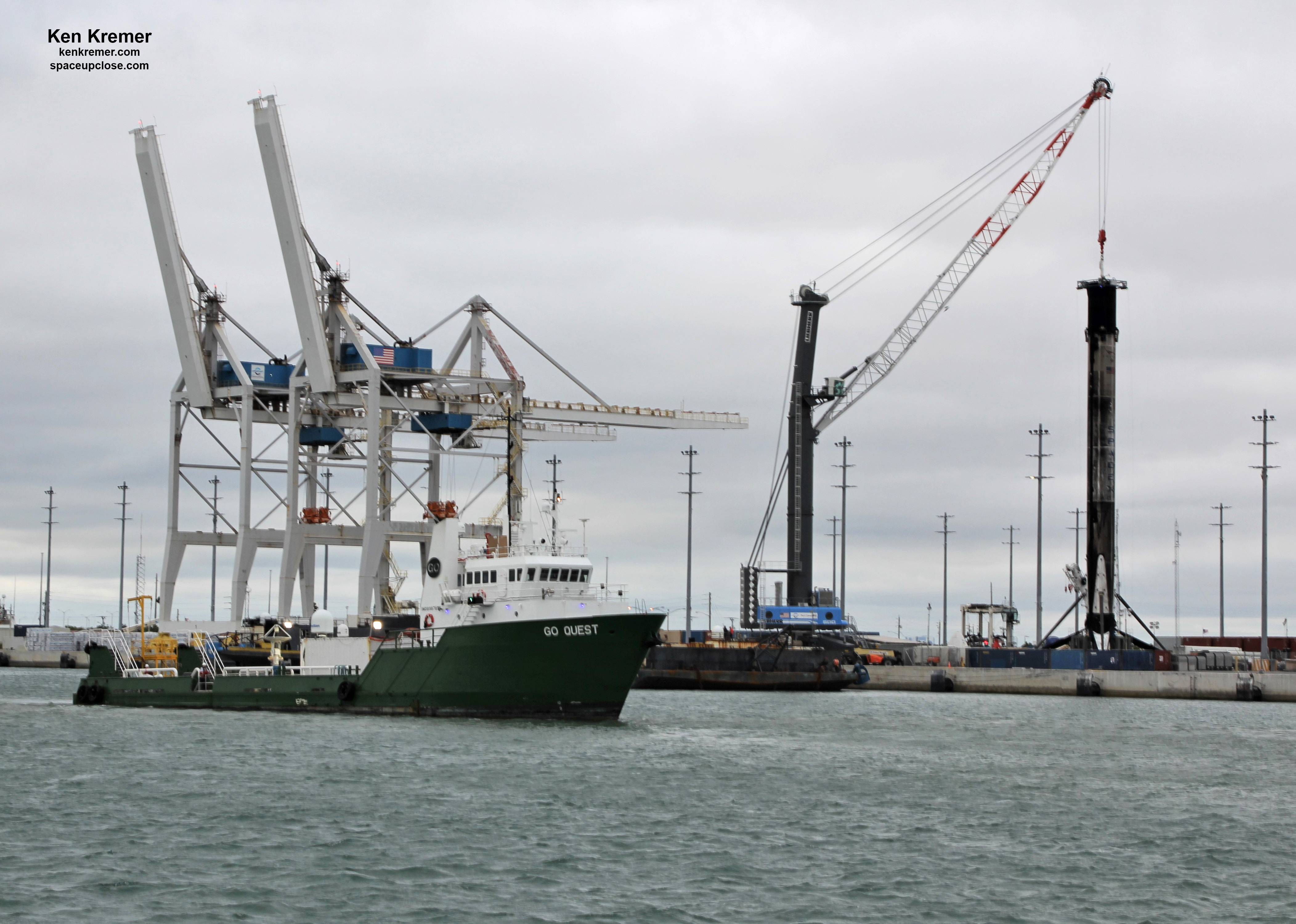
After work resumed Tuesday morning, Nov 19 the team methodically detached all four landing struts and pads – while I was attending the unveiling of the SNC Dream Chaser cargo module at NASA’s Kennedy Space Center.
Thus we were left to observe a legless Falcon 9 standing atop the ground pedestal in mid-afternoon.
At 2:45 p.m. Nov 19 the Liebherr crane with a cable attached to the BLLRD hoisting cap was called to action.
The Falcon 9 booster was raised off the pedestal where the landing legs are detached and moved to a spot a few feet to the left and lowered fully to the ground.
The team then attached a second lengthy cable to the bottom of the booster attached to a second crane.
The SpaceX work crew then used a pair of cranes with cables attached to the top and bottom of the booster to lower it gracefully horizontally.
The 15 story first stage was gradually tilted, slanted over and lowered horizontal onto a transporter vehicle.
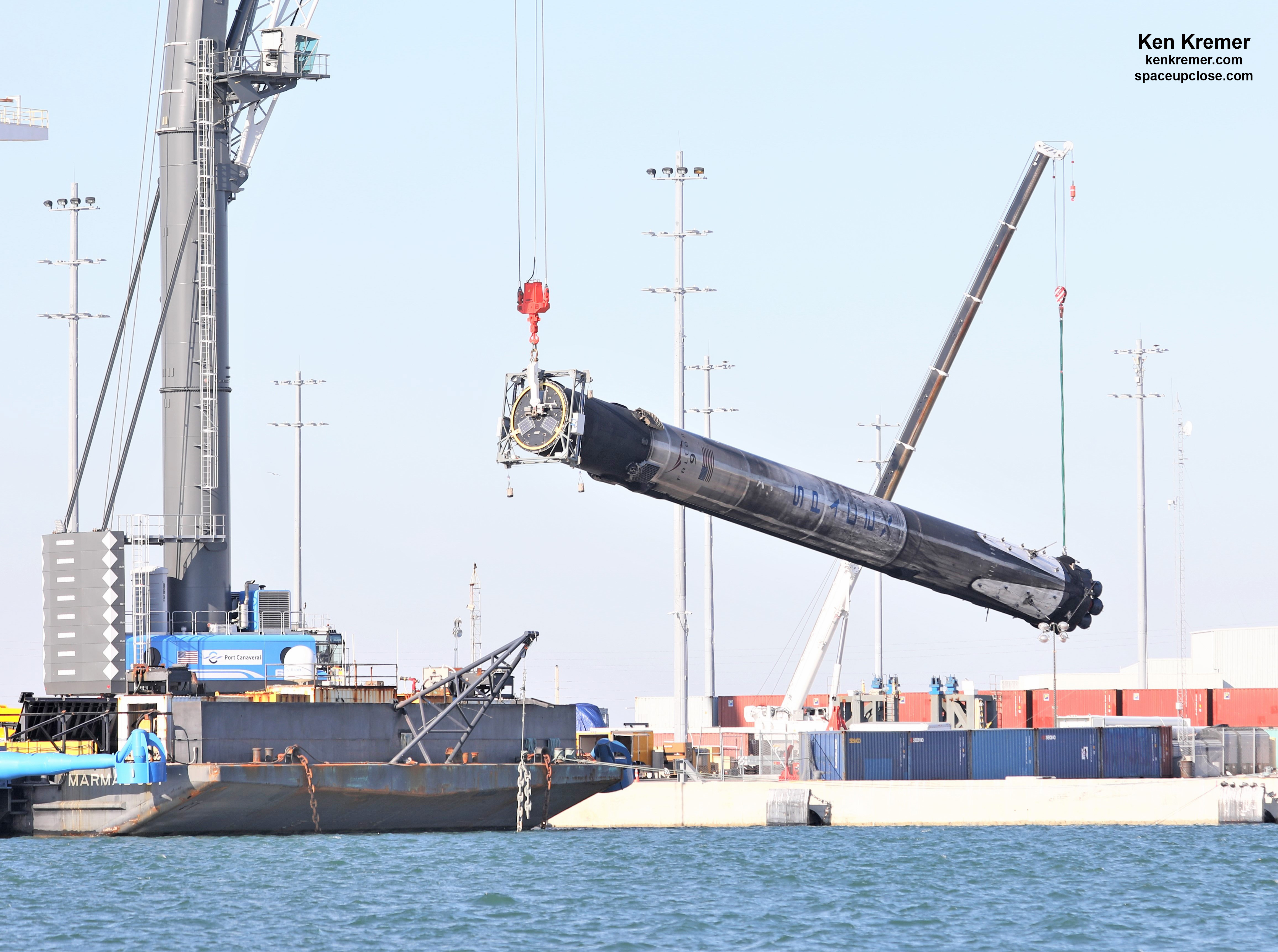
Lowering the 156-foot-tall 1st stage started at 2:45 p.m. EST Nov. 19 and proceeded rapidly with no stopping. Its all over in about 15 minutes.
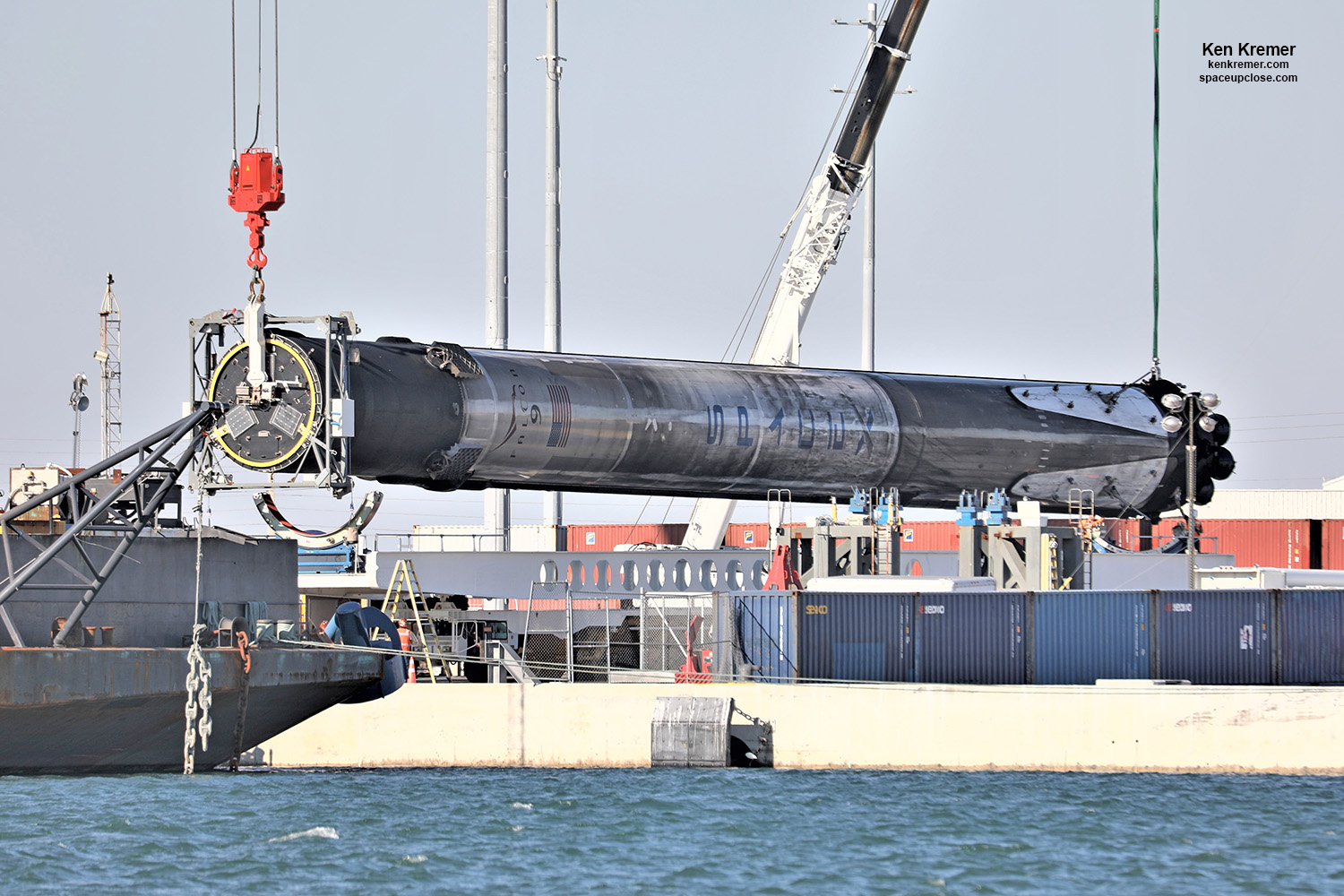
The crews than lowered the booster onto the transporter and attached the ring clamps around it to secure to the transporter.
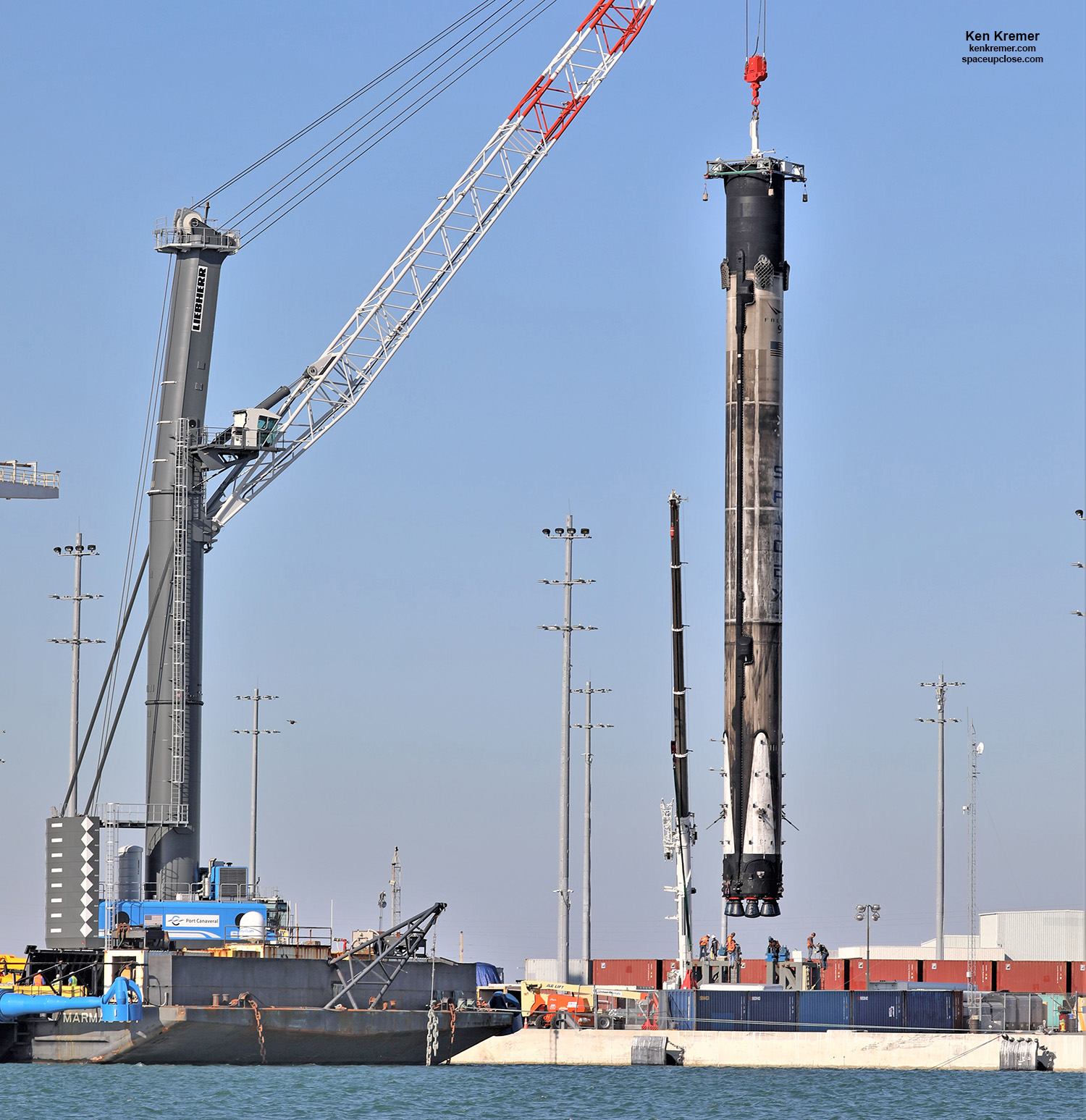
On Wednesday morning, Nov. 20. the horizontal booster was hauled on the transported back to SpaceX processing facilities on the Cape.
The mission began with liftoff of the Starlink mission at 9:56 a.m. EST (1456 GMT) during an instantaneous launch window Monday, Nov 11 from Space Launch Complex-40 (SLC-40) on Cape Canaveral Air Force Station, FL.
Eight minutes later the Falcon 9 first stage successfully made a precision rocket assisted intact and upright touchdown on the ‘Of Course I Still Love You’ (OCISLY) droneship prepositioned in the Atlantic Coast off the Carolinas.
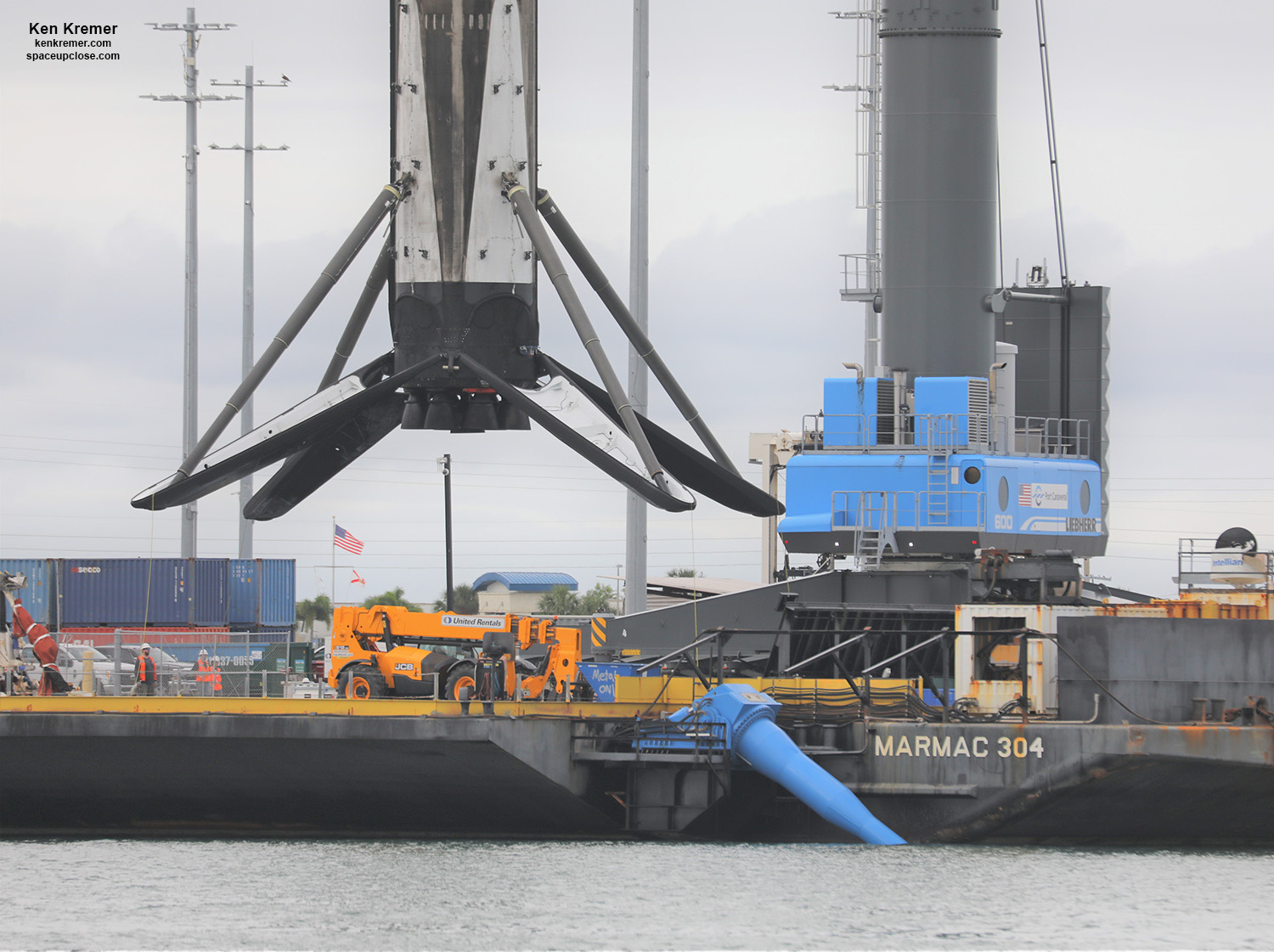
This Starlink mission counts as the heaviest ever payload lofted by a Falcon 9.
This marks the fourth successful launch and landing for the first stage B1048.4 booster – thus setting the stage for a fifth mission.
These upgraded Block 5 Falcon 9 first stages are designed for 10 launches with minimal refurbishment says Musk.
Falcon 9’s first stage previously supported the Iridium-7, SAOCOM-1A, and Nusantara Satu comsat/Beresheet moon landing missions.
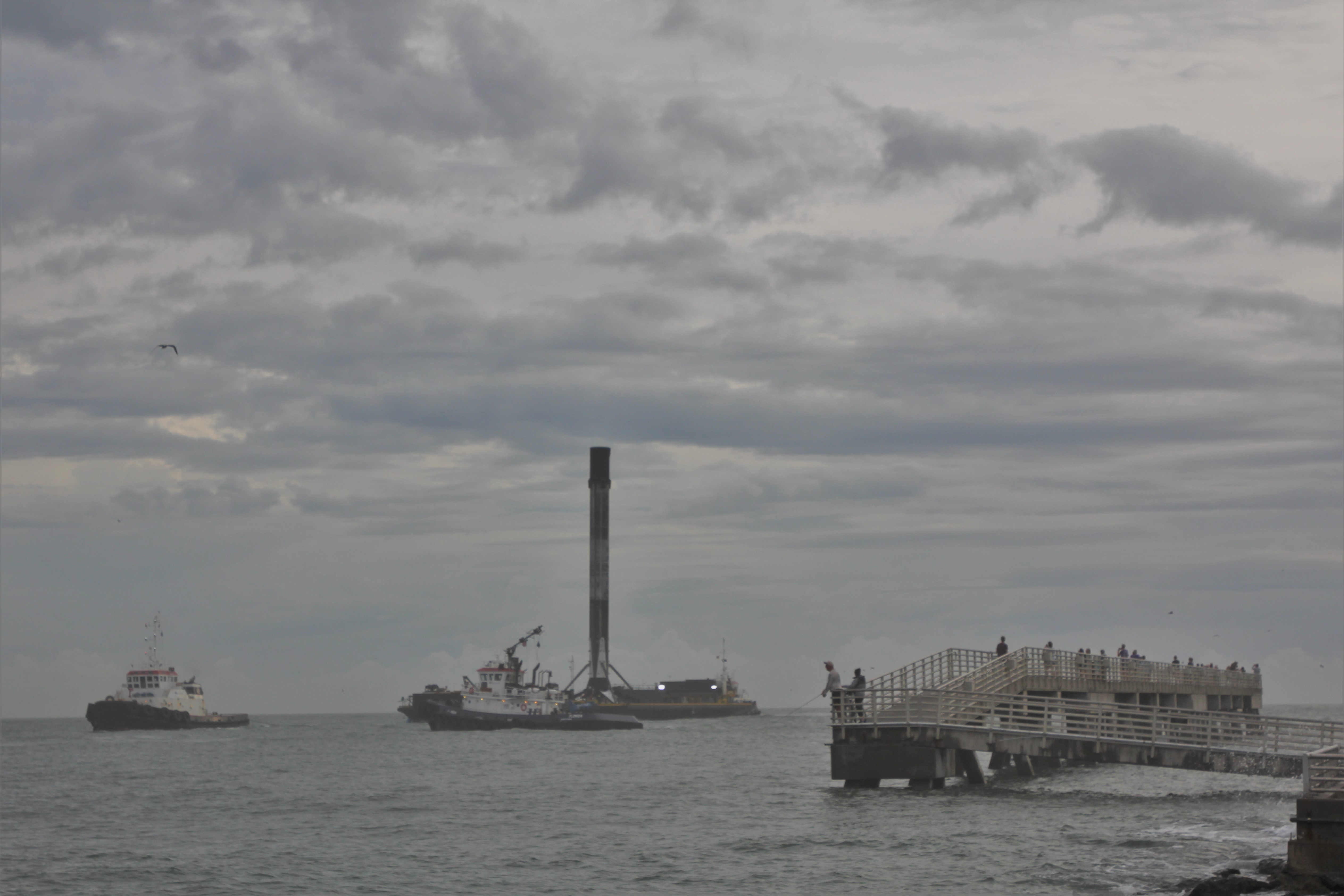
The next SpaceX Falcon 9 launch is slated for Dec. 4 on the CRS-19 resupply mission for NASA to the International Space Station (ISS).
Watch my commentary on WFTV ABC TV News 9 Orlando on Nov. 15, 2019 about Starlink and the NASA Inspector General report warning about further delays to launching Commercial Crew capsules from Boeing and SpaceX to the ISS and the imperative to begin launches soon before NASA’s last contract for Soyuz seats expires:
https://www.wftv.com/news/florida/nasa-audit-warns-of-safety-risks-in-delayed-private-crew-launches/1009107861
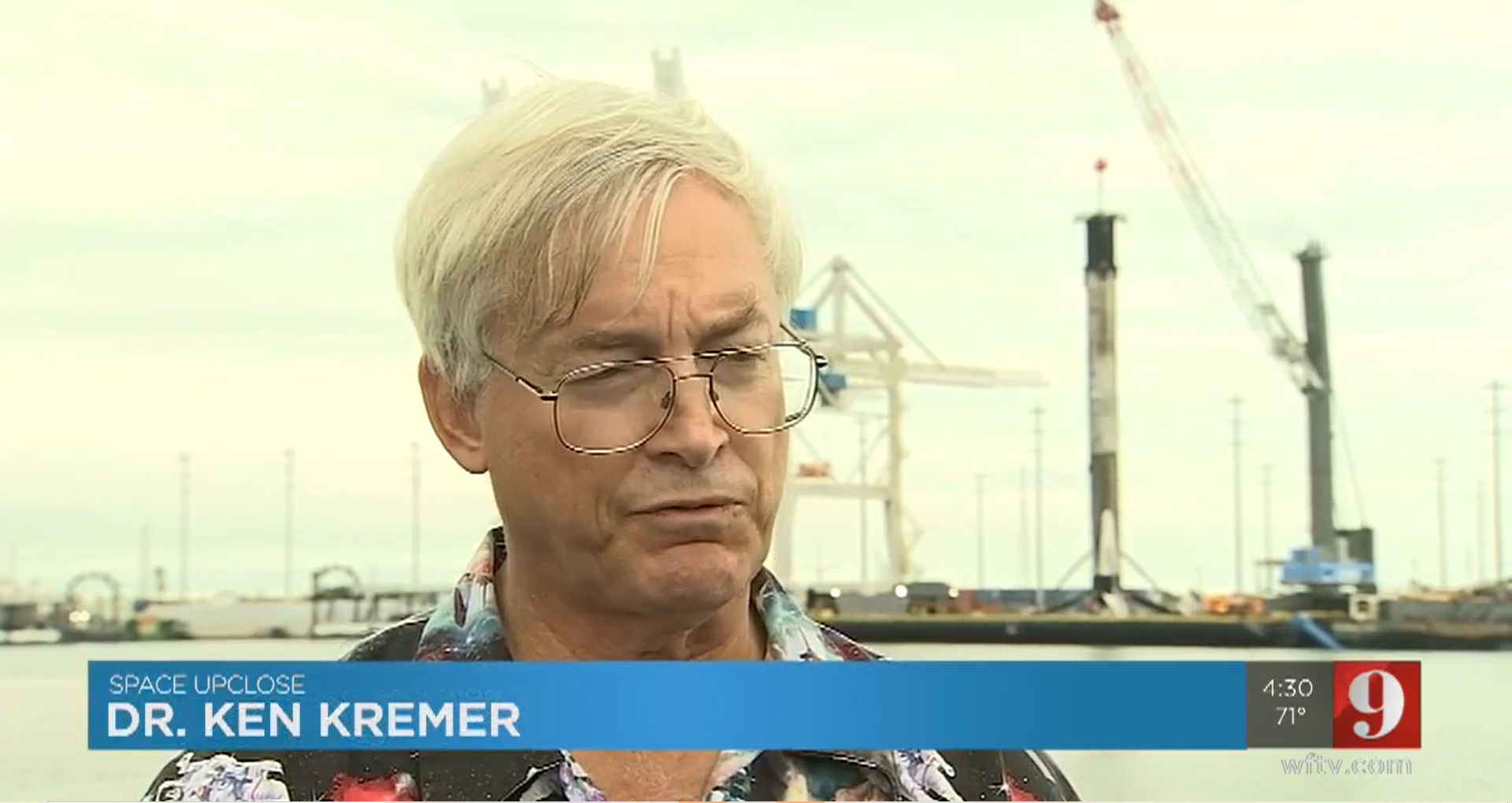
Watch my continuing reports onsite.
Stay tuned here for Ken’s continuing Earth and Planetary science and human spaceflight news: www.kenkremer.com –www.spaceupclose.com – twitter @ken_kremer – email: ken at kenkremer.com
Dr. Kremer is a research scientist and journalist based in the KSC area, active in outreach and interviewed regularly on TV and radio about space topics.
………….
Ken’s photos are for sale and he is available for lectures and outreach events
Ken’s upcoming outreach events:
Dec 3/4: 7 PM, Quality Inn Kennedy Space Center, Titusville, FL. “SpaceX CRS-19 Launch to ISS Dec 4.” Free. In hotel lobby. Photos for sale
